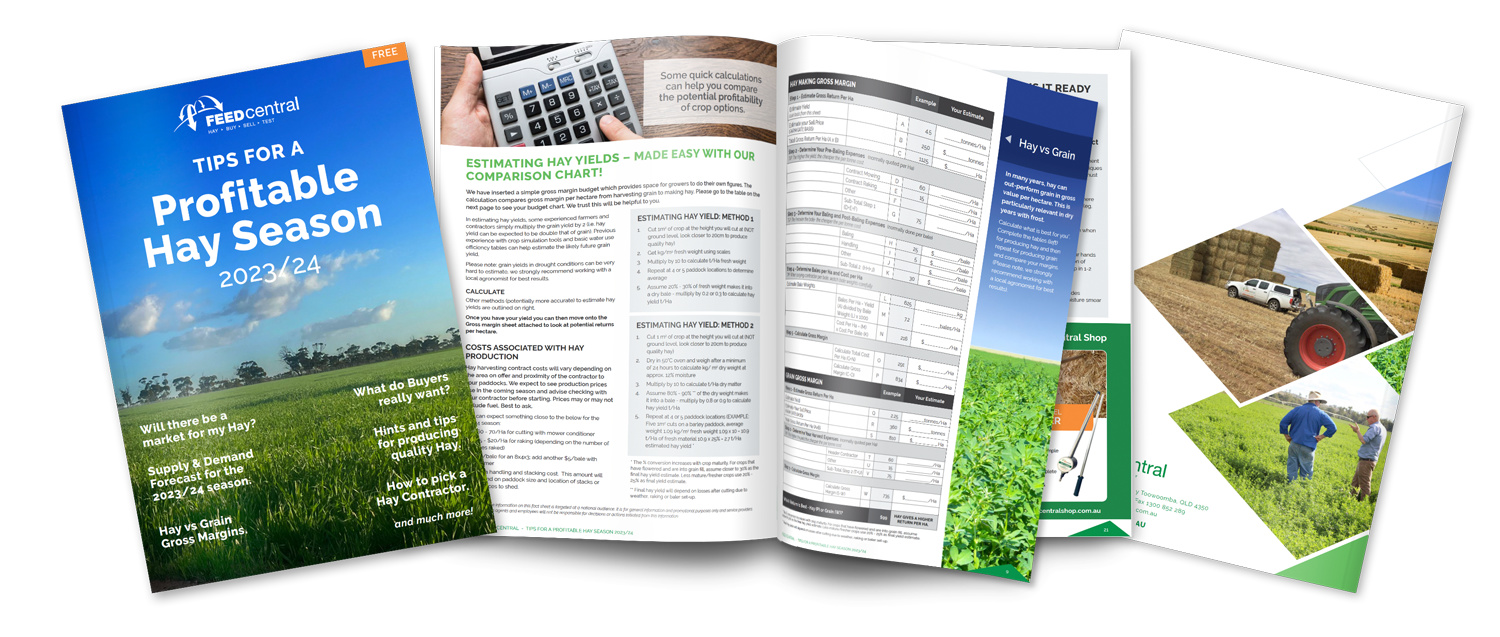In summary, here’s what Feed Central Hay buyers want:
- Heavy, large, square bales (8x4x3) that maximise freight and handling efficiencies at every stage. High density (HD) balers that can deliver this size bale are now highly preferred.
- Feed with high Energy & good Protein, so baling while the crop is immature is vital. The higher the energy (M.E.) the better. The best way to increase energy is to cut early. You can Interpret your feed tests here.
- Oats, Barley, Wheat, Vetch and Lucerne Hay that is green in colour with no (or minimal) weather damage.
- Access to fodder 365 days of the year.
- Shedded product, with all-weather access. In the Feed Central system, buyers are quoted delivered prices to their property within seconds. Obviously, the heavier bales are, the lower the freight cost per ton will be. Growers with heavy bale weights will often get a higher ex-farm price as the freight component is cheaper, so even though the supplier’s ex-farm price is higher, the buyer’s price is lower, so EVERYONE’S A WINNER.
High-density large square bales, such as those made by the Krone 8 String Balers and the 8x4x3, are very popular because you achieve an excellent load on a Drop-Deck or B-Double trailer and most front-end loaders can handle the weight.
Heavy bales will achieve pay weights in general, so focusing on achieving heavyweights regardless of the bale configuration will always be of benefit to your operation.
Alternative Bale Sizes unpacked.
If you must make round bales, consider 4×4 bales which have freight advantages over 5×4 rounds. Small, square bales are a viable alternative for niche markets. High-density large square bales are normally cheaper to make when calculated on a per ton basis.
It is also quicker and easier to move a large volume of large squares both on-farm and on trucks. Do not underestimate the importance of this. Bale weights and sizes are the area where smart growers maximise their returns and create huge efficiencies in their operation. In very simple terms, imagine all the extra work and man-hours required to move 500kg bales off your paddock versus 750kg bales.
Think of the cost. Now, multiple this tenfold as you think about loading, transport, unloading etc. Maximum efficiencies are gained in high-density 8x4x3 bales.
-
Why Does Hay Get Dusty And What Causes It?
Author Neville Janke Neville Janke is a qualified agronomist and Horticulturist with over 20 years of experience guiding farmers in the Agricultural and Horticultural industries. With this experience, Neville has been helping long-term users of Hay and grain to experience the Feed Central way of sourcing quality Feed for hungry cattle. View all posts

